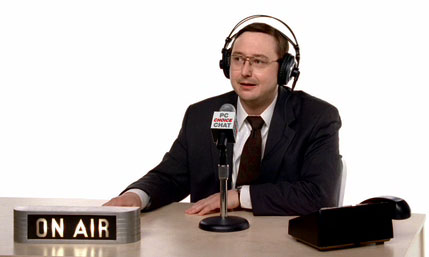This is dedicated to those who see their computers and BlackBerry’s and tablets as work tools.
Tag Archives: Apple
Growing up with the iPhone
The iPhone belongs to the little girl’s mother but one assumes she’ll have her own (or her mom won’t). They’re watching YouTube videos (I believe I hear the lilting strains of “Friday”).
The iPhone will be a transparent part of their lives (rather than the magical device it is for us). As adults, they’ll laugh at the quaint old iPhones of their youth (think rotary dials and party lines). How they will communicate in that oh-so-close future, I cannot imagine.
A little child shall lead them
 I am endlessly fascinated by technology. How we use it and how it changes us. The photo is of a couple of regulars at the Coffee Zone. I remember when dad switched to the iPhone. And later when he started asking me about the iPad. It seems ages ago but it was only months ago.
I am endlessly fascinated by technology. How we use it and how it changes us. The photo is of a couple of regulars at the Coffee Zone. I remember when dad switched to the iPhone. And later when he started asking me about the iPad. It seems ages ago but it was only months ago.
She plays games on the iPad and watches Netflix movies. But there will soon be nothing she cannot do on the device.
It’s inconceivable (to me) that she won’t have this with her in class. That will be delayed because not all of the kids will have them and etc etc.
I can’t even imagine how this will change education. Of course, education will have to change but that seems inevitable.
We’ve had hallway discussions at our company about the various tablets and platforms (Android, Windows, iPad, etc). My friend Phil (a very smart guy) assures me a lot of companies will take the “safe and secure” route of Windows devices.
But the kids in this little girls class could care less about Word and Excel and all the rest. They want to have fun and create and that will be on the iPad (for the forseeable future). You can take it to the bank.
The importance of design at Apple
“…a friend of mine was at meetings at Apple and Microsoft on the same day and this was in the last year, so this was recently. He went into the Apple meeting (he’s a vendor for Apple) and when he went into the meeting at Apple as soon as the designers walked in the room, everyone stopped talking because the designers are the most respected people in the organization. Everyone knows the designers speak for Steve because they have direct reporting to him. It is only at Apple where design reports directly to the CEO.
Later in the day he was at Microsoft. When he went into the Microsoft meeting, everybody was talking and then the meeting starts and no designers ever walk into the room. All the technical people are sitting there trying to add their ideas of what ought to be in the design. That’s a recipe for disaster.”
TED Talk: “People don’t buy what you do, they buy why you do it.”
In a recently-released TED video, author Simon Sinek explains what he sees as the secret to Apple’s success and makes a case for the real reason the company is so innovative–even though it has “the same access to the same talent, the same agencies, the same consultants, the same media.”
Apple to offer online TV subscriptions?
I’d hate to see the math on what DirecTV really costs, based on how many channels/programs I watch each month. And I thought I wouldn’t live to see a) cable/sat unbundle programming or b) a serious alternative. But maybe I was wrong.
“Apple is eliciting tentative interest from some networks in its proposal to offer a TV subscription package via the Internet. Theoretically, customers would be able to tune in online, allowing them to cancel their cable or satellite subscriptions.
Broadband Internet subscriptions to TV networks could potentially destabilize the bedrock of the television business, which relies on subscribers paying for dozens of bundled channels.
The blog All Things D reported last month that Apple was proposing a $30-a-month supplement to its iTunes service to the networks. The networks would receive monthly payments from Apple.”
Rest of the story is here.
If Apple made cars
New Get a Mac ads (2009)

Wonder how many of these there are now? Started in 2006. The three new ones are Customer Care, Elimination and PC Choice Chat (above). I love that they didn’t bother put with mic cord or phone cords. If you’d like to make these stop… get a Mac.
Alzheimer’s Disease iPhone app
My father and Barb's father suffered from Alzheimer's Disease and died from related illnesses. But I am no kind of expert on the disease. Please keep that in mind as you follow along with this post.
I checked the iPhone apps store and didn't find anything like what I'm going to try to describe. Probably a good reason for that. And the application I'm imagining would be targeted at those in the early and mid stages of the disease. And if they refused to keep the phone with them or couldn't remember to take it, game over. But let's assume they're on board.
The iPhone app would launch whenever the phone was turned on. It would be programmed with information about the patient (for lack of a better term).
The map would have pins for the patient's favorites spots (corner market, hair salon, friends, etc). If they clicked on one of the pins, a small bubble would appear with the person photo and some info about them. A video link would play a short video clip ("Hello, Mrs. Johnson. Steve Mays here. Looking forward to your next visit.") and, of course a phone number to call the person.
The patient and family would decide on a radius that covered most of the places they were likely to go. Let's say 20 miles. If they go outside that radius, the phone wakes up and a familiar (?) voice says something along the lines of: "Hi, mom. It's me, Janice. Please give me a call. Just hit the green button.")
This repeats a couple of times and if ignored, the iPhone begins calling family and –if necessary– the authorities.
My father would go to morning coffee and on the way home make a wrong turn and just get confused about where he was. With an app like this he could have turned it on (maybe by just shaking it?) and seen the blue pin for where he is and the red pin for home. Or just say, "Help" or "I'm lost" and get assistance.
And before you point out "if they can't work the Tivo…" Remember I'm talking about people who grew up with mobile phones and –eventually– iPhones. We're gonna be freaked if we don't have the things in bath robes.
If this already exists, send me a link. I'd love to see it. If you have ideas for features I didn't think of, share those in the comments.
And if you are some brilliant young app developer and can make this thing a reality. You've got my blessing. You might even donate porcedes to Alzheimers Assocaition.
iPhoto 09: Faces and Places
I only have 2,300 photos on my laptop, which has become my default computer. The other kids I play with have many, many more than that. But I don’t know how I’d keep up with a couple of thousand photos without iPhoto. I’m not saying it’s the best way to manage your images, only that it’s the best for me. And the new version includes two new features that I really like.

Faces attempts to “recognize” the people in your your photos and group them. This little video tour ‘splains it better than I can but after playing with this for an hour or two, I’m reminded that people (and places) are the way I think about my photos.
Sure, I could go through 2,000+ and tag photos of Barb. But I’d never get around to it. iPhoto 09 pretty much does it for you (with a little help).
I’ll talk about Places in a later post.


